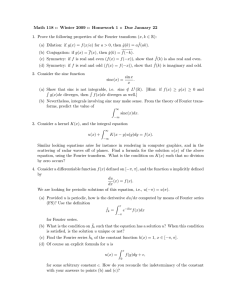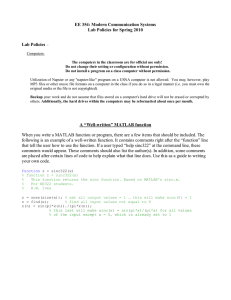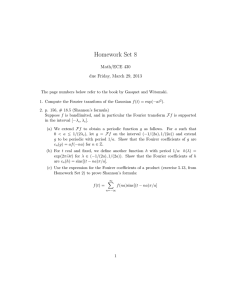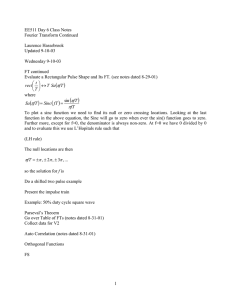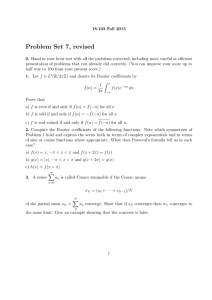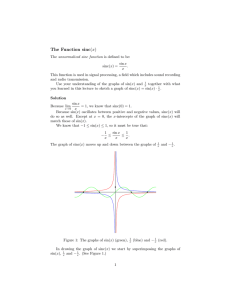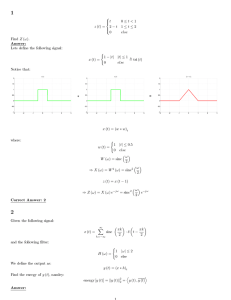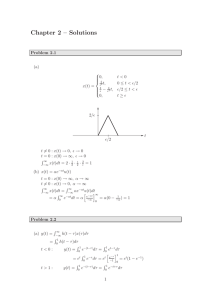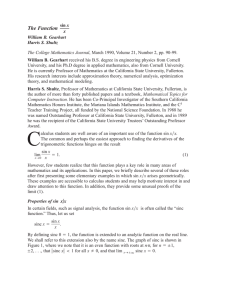18.330 :: Homework 7 :: Spring 2012 :: Due Thursday...
advertisement
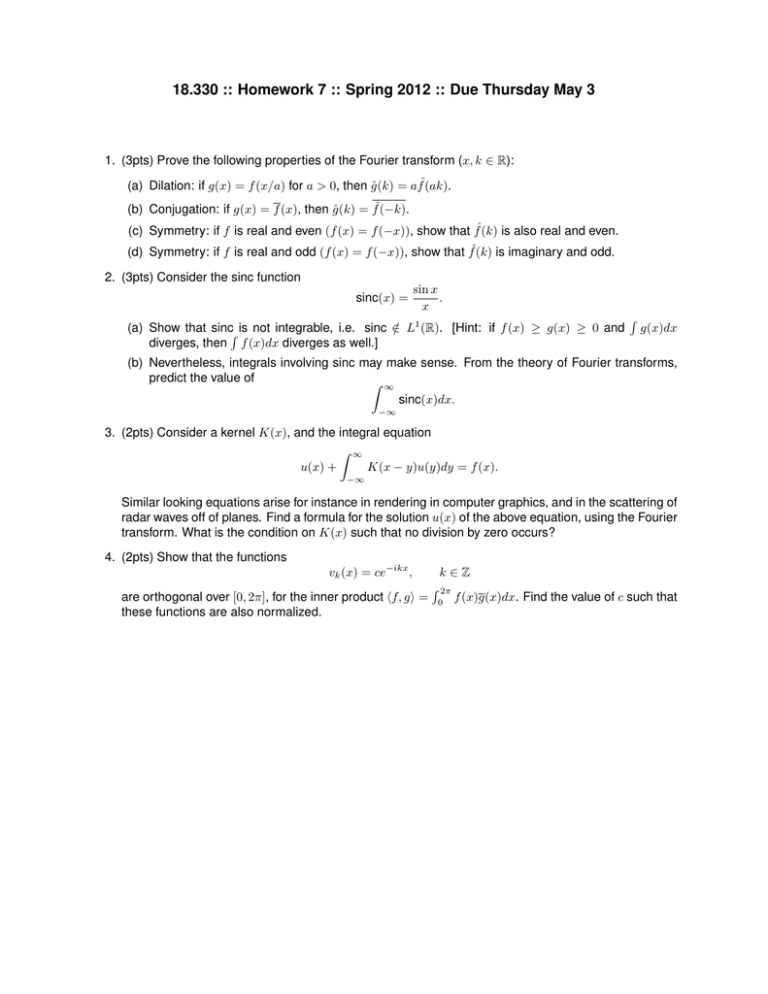
18.330 :: Homework 7 :: Spring 2012 :: Due Thursday May 3 1. (3pts) Prove the following properties of the Fourier transform (x, k ∈ R): (a) Dilation: if g(x) = f (x/a) for a > 0, then ĝ(k) = afˆ(ak). (b) Conjugation: if g(x) = f (x), then ĝ(k) = fˆ(−k). (c) Symmetry: if f is real and even (f (x) = f (−x)), show that fˆ(k) is also real and even. (d) Symmetry: if f is real and odd (f (x) = f (−x)), show that fˆ(k) is imaginary and odd. 2. (3pts) Consider the sinc function sinc(x) = sin x . x (a) Show that sincR is not integrable, i.e. sinc ∈ / L1 (R). [Hint: if f (x) ≥ g(x) ≥ 0 and diverges, then f (x)dx diverges as well.] R g(x)dx (b) Nevertheless, integrals involving sinc may make sense. From the theory of Fourier transforms, predict the value of Z ∞ sinc(x)dx. −∞ 3. (2pts) Consider a kernel K(x), and the integral equation Z ∞ u(x) + K(x − y)u(y)dy = f (x). −∞ Similar looking equations arise for instance in rendering in computer graphics, and in the scattering of radar waves off of planes. Find a formula for the solution u(x) of the above equation, using the Fourier transform. What is the condition on K(x) such that no division by zero occurs? 4. (2pts) Show that the functions vk (x) = ce−ikx , k∈Z R 2π are orthogonal over [0, 2π], for the inner product hf, gi = 0 f (x)g(x)dx. Find the value of c such that these functions are also normalized. MIT OpenCourseWare http://ocw.mit.edu 18.330 Introduction to Numerical Analysis Spring 2012 For information about citing these materials or our Terms of Use, visit: http://ocw.mit.edu/terms.
